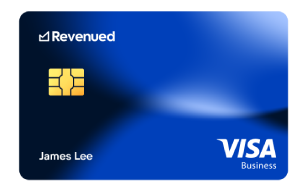Operating Cash Flow vs Free Cash Flow: What’s the Difference?
Operating Cash Flow vs Free Cash Flow: What’s the Difference?
For businesses, small and large, cash flow is a key indicator of a company’s financial health.
There are several ways to measure cash flow. A basic method is comparing beginning and ending cash balances, but this doesn’t tell the full story. To truly understand cash flow vs free cash flow, we must dive into structured financial reporting. The difference will indicate cash flow vs free cash flow.
But financial professionals generally use more sophisticated means to measure cash flow, namely free cash flow and operating cash flow. What are the differences? Let’s find out.
What is Free Cash Flow?
Free cash flow (FCF) is a popular tool in finance used to analyze a business’s health and long-term sustainability. It is often compared against operating cash flow, but is operating cash flow the same as free cash flow? The short answer is no, and here’s why.
Often referred to as FCF, free cash flow is the cash that a business generates during its normal operations minus money spent on capital expenditures like property or equipment. Essentially, FCF is the “free” remaining cash left to the company after it pays its expenses.
For that reason, investors use this metric to evaluate the financial stability of a business and how effectively it manages its capital to generate a profit. Likewise, financial industry professionals will look at FCF to ensure that a company is wisely using its resources.
An excess of free cash flow vs net cash flow is a good indicator that a business is financially stable. Free cash flow in finance is a crucial metric that reflects a company’s true earning potential, especially when comparing net income vs free cash flow or EBITDA vs FCF.
How the Free Cash Flow Number is Used
The amount of cash available is used in a number of ways to evaluate a company’s position.
One primary way is to determine the amount of dividends a company can pay its investors. If a company still has free cash available after paying out its dividends, that is one metric indicating the health of a company. If free cash exceeds the dividend payments, it likely means that the business can increase its dividends in the future.
The free cash flow number is also used to judge how much money a company has to pay creditors. This is a useful number for a bank to know, since it indicates if the company can repay a loan. It is also a good sign that the business can finance further loans.
In short, free cash flow from operations represents the cash available after accounting for capital expenditures. If you're wondering how to get to free cash flow, the most common formula is:
Operating Cash Flow – Capital Expenditures = Free Cash Flow
This is useful when comparing free cash flow vs net cash flow or evaluating business solvency over time.
What is Operating Cash Flow?
Operating cash flow (OCF) is the cash generated from regular business operations, not to be confused with operating income vs cash flow. It’s calculated by adjusting net income for changes in working capital and non-cash expenses. Recorded on a company’s cash flow statement, operating cash flow is reported quarterly and annually. Operating cash flow is a good measure of whether a company has enough cash to maintain, and even expand, operations. It can also be used to determine if a business would benefit from external financing.
Financial analysts sometimes favor the operating cash flow vs free cash flow number because it provides a clearer picture of the current reality of the business operations.
For example, let’s say a company makes a big sale that is a boost to quarterly revenue. That’s good news, right? It is, but what if the same company is having difficulty collecting payments? In that case, the big sale is a nice number on a spreadsheet but doesn’t really help a company’s bottom line.
Is Free Cash Flow the Same as Operating Cash Flow?
No. While related, they serve different purposes:
-
Operating cash flow shows how much cash is generated from core operations
-
Free cash flow subtracts capital expenditures to reflect cash that’s truly “free” to use
Both are found on the cash flow statement, but free cash flow requires further calculation. Understanding the difference between free cash flow and operating cash flow helps business owners, analysts, and investors assess profitability and capital efficiency.
An operating cash flow number can also be deceptive as it relates to fixed assets. Let’s say a business has a good amount of operating cash flow but reports low net income because it holds a lot of property or other fixed assets. In that case, while operating cash flow may seem healthy, it’s essential also to consider levered free cash flow or unlevered free cash flow to account for financing activities and debt obligations.
The Main Differences: Operating Cash Flow vs. Free Cash Flow
We’ve already seen that free cash flow vs operating cash flow is often a question of who is using the numbers and for what purpose.
For example, a company executive may want to use operating cash flow to analyze trends in spending and overhead costs. By improving the way a business procures products or pays operators, it can be more profitable. At the same time, an investor might want to know about free cash flow to determine if a company is worthy of further interest.
These two financial measurements also differ in their scope: free cash flow includes capital expenditures and debt, while operating cash flow includes only the profits generated by a company’s operations.
Ultimately, understanding the difference between operating cash flow and free cash flow — and when to use each — is crucial for business leaders and investors.
IN THIS ARTICLE
RELATED ARTICLES
Revenued Business Flex Line vs Ecommerce Revenue Based Financing
Learn MoreRevenued Flex Line Pricing vs. (MCA): A Comparative Analysis
Learn MoreWhat is My Business’ Credit Utilization Ratio?
Learn MoreWhy is Cash Flow Important to Your Business?
Learn More
Boost your spending power with the Revenued Business Card
Only pay for what you use at gas stations, hotels, supply stores, supermarkets and more.
Take control with the Flex Line
Check your available balance online and request a cash draw with the tap of your finger, anytime.

